Coma Cluster of Galaxies
A dense cluster in Coma Berenices
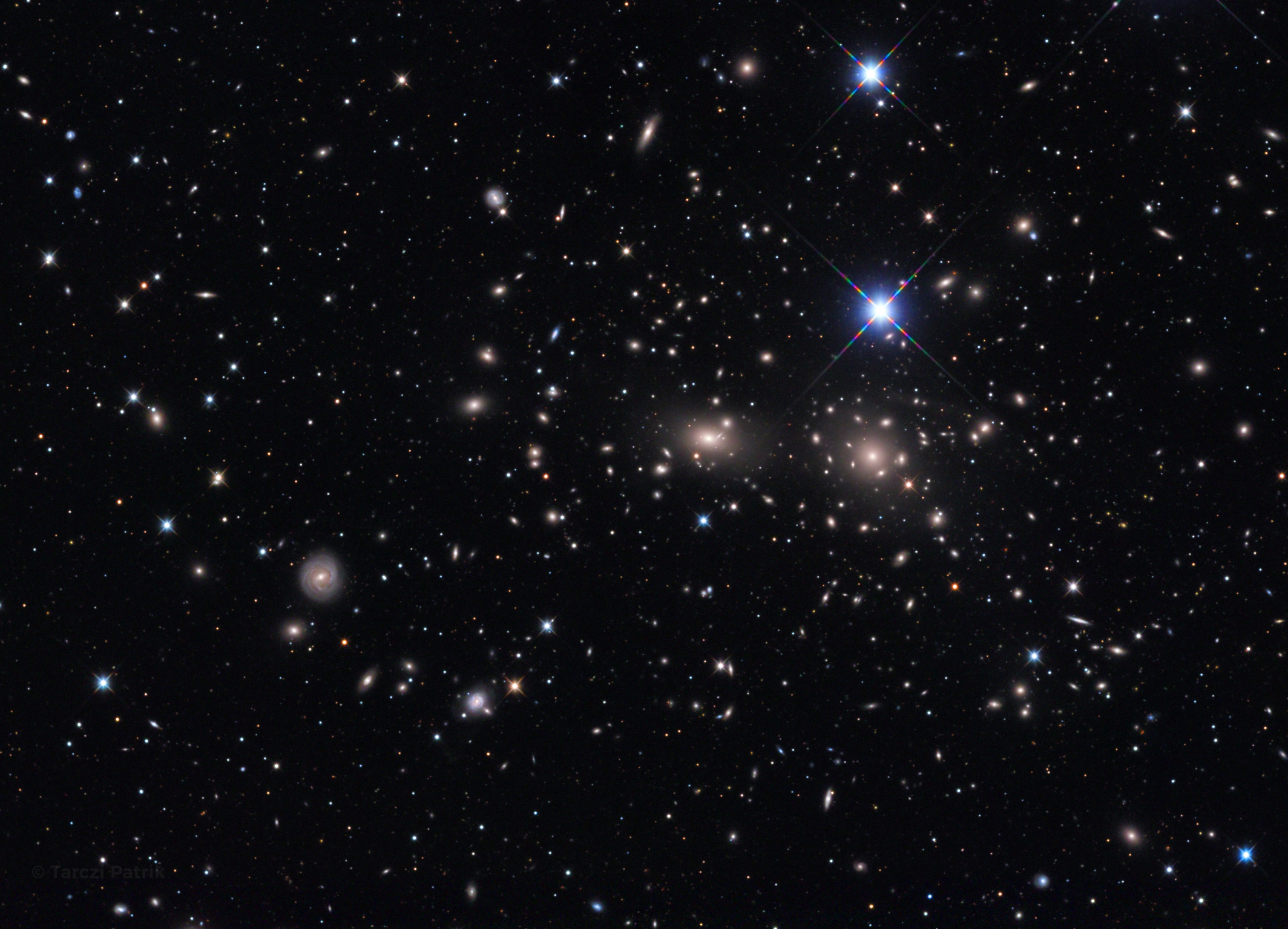
Technical data
| Instrument: | 173/700 Newton-astrograph (ZsIO), SkyWatcher comacorrector F/4 |
| Camera: | Atik One 6.0 |
| Filter: | Astronomik Deep-Sky LRGB, Astronomik L1 |
| Mount: | SkyWatcher NEQ6 Pro Synscan (modified) |
| Guiding: | Lacerta M-Gen autoguider, OAG |
Image data
| Exposure time: | Sum.: 17 hours; L: 7.5 hours, R: 4.5 hours, G: 3.1 hours, B: 3.5 hours |
| Location, date: | Hungary, Izsákfa - 2017. April, May |
| Transparency: | 4/10 |
| Temperature: | 17 °C |
| FWHM: | 3.00" |
| Processing: | CCDStack, Registar, Pixinsight LE, Photoshop |
Description
Coma Cluster is a dense cluster of galaxies in constellation Coma Berenices. It contains over 1,000 identified galaxies. Along with the Leo Cluster, they make up the Coma Supercluster.
The central region is dominated by two supergiant elliptical galaxies: NGC 4874 and NGC 4889, these can be found in the middle of the photo. The cluster is within a few degrees of the north galactic pole on the sky. Most of the galaxies that inhabit the central portion of the Coma Cluster are ellipticals.
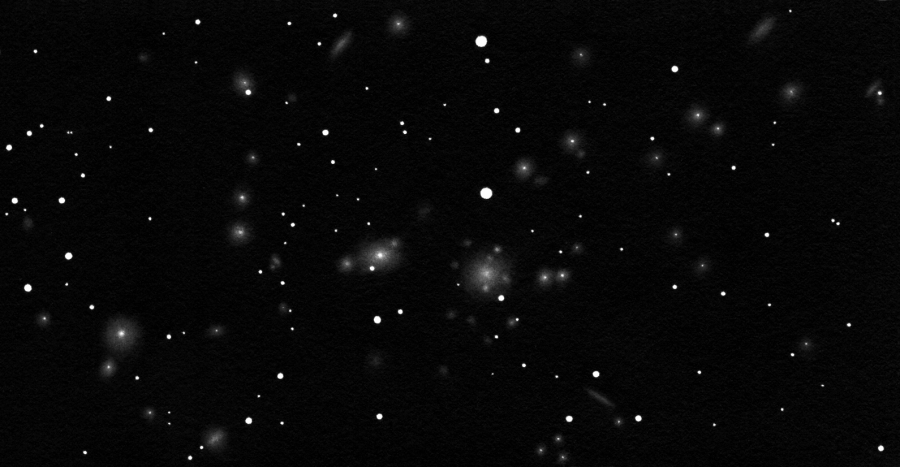
Visual Observation
The ten brightest galaxies are about 11-14 magnitude, though they are quite easy to catch with an amatour telescope. Peter Kiss in the spring of 2015 made an amazingly detailed drawing of Come Cluster. Hava a look at it!
![Coma Halmaz FWHM [ " ] Coma Halmaz FWHM [ " ]](http://www.patrikphoto.com/rimg/1/212_577_11ae7278_ComaFWHM.jpg)
Technical data
| Instrument: | 173/700 Newton-astrograph (ZsIO), SkyWatcher comacorrector F/4 |
| Camera: | Atik One 6.0 |
| Filter: | Astronomik Deep-Sky LRGB, Astronomik L1 |
| Mount: | SkyWatcher NEQ6 Pro Synscan (modified) |
| Guiding: | Lacerta M-Gen autoguider, OAG |
Image data
| Exposure time: | Sum.: 17 hours; L: 7.5 hours, R: 4.5 hours, G: 3.1 hours, B: 3.5 hours |
| Location, date: | Hungary, Izsákfa - 2017. April, May |
| Transparency: | 4/10 |
| Temperature: | 17 °C |
| FWHM: | 3.00" |
| Processing: | CCDStack, Registar, Pixinsight LE, Photoshop |
Recommended photos
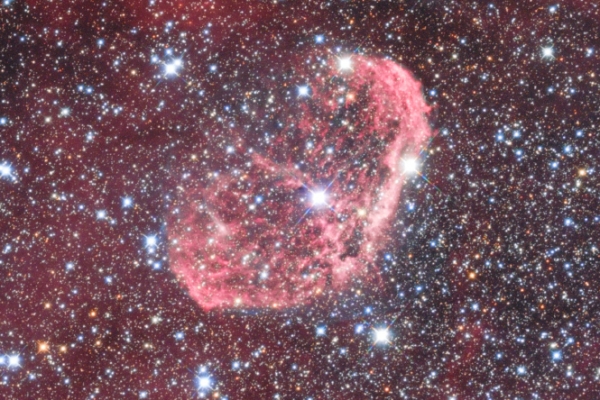
The Crescent Nebula
NGC 6888, also known as the Crescent Nebula, is a cosmic bubble about 25 light-years across, blown by winds from its central, bright, massive star.
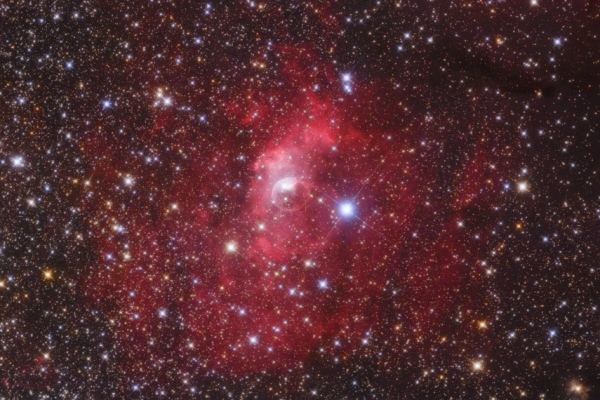
The Bubble Nebula
The Bubble Nebula and its surroundings, inter alia, M52 located in the border of constellation Cassiopeia.
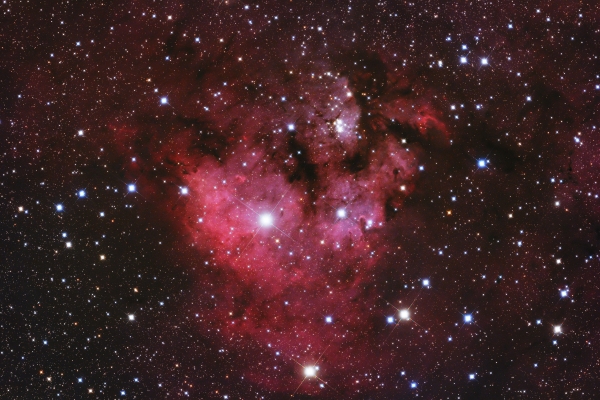
The Devil's Head Nebula
Towering pillars of cold gas and dark dust adorn the center star forming region of Sharpless 171.


